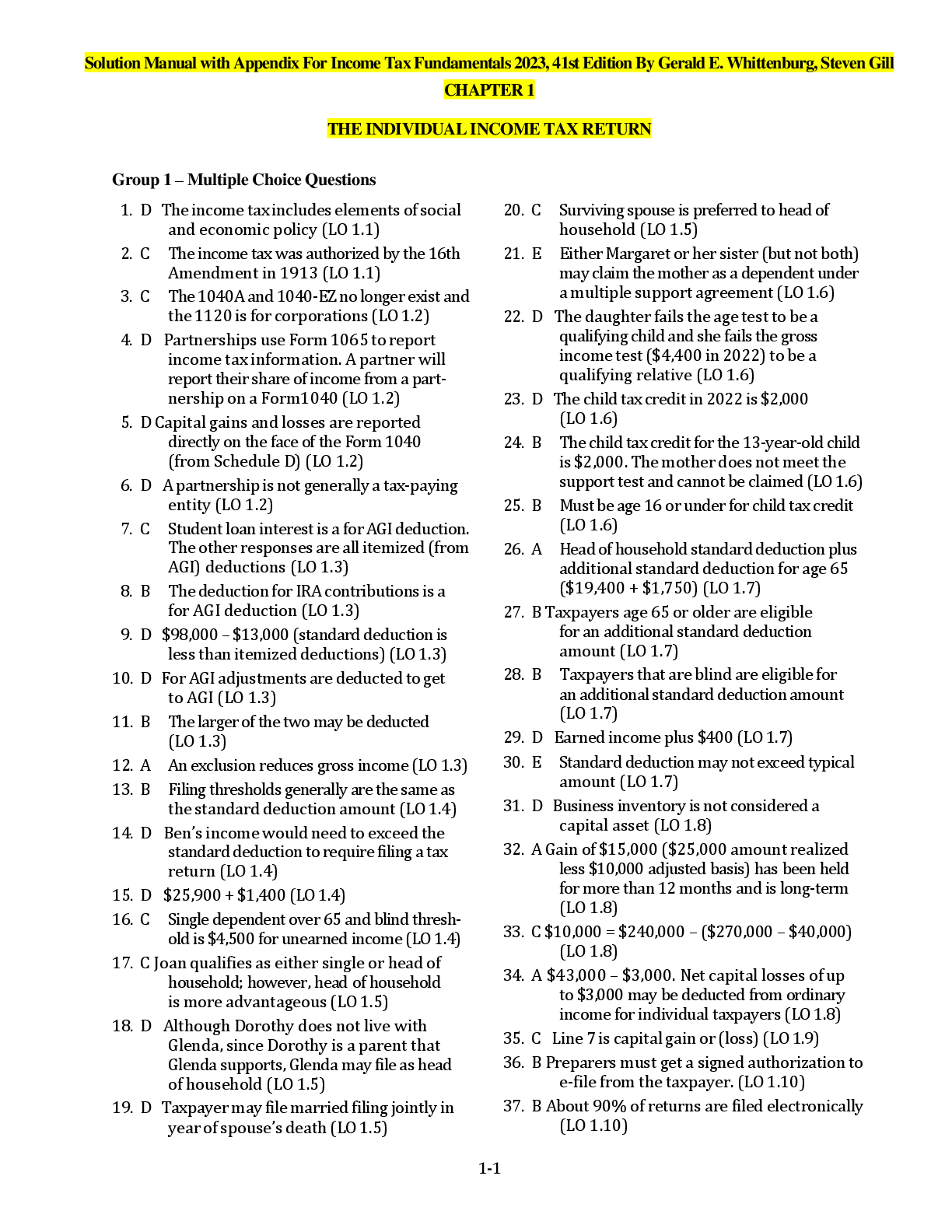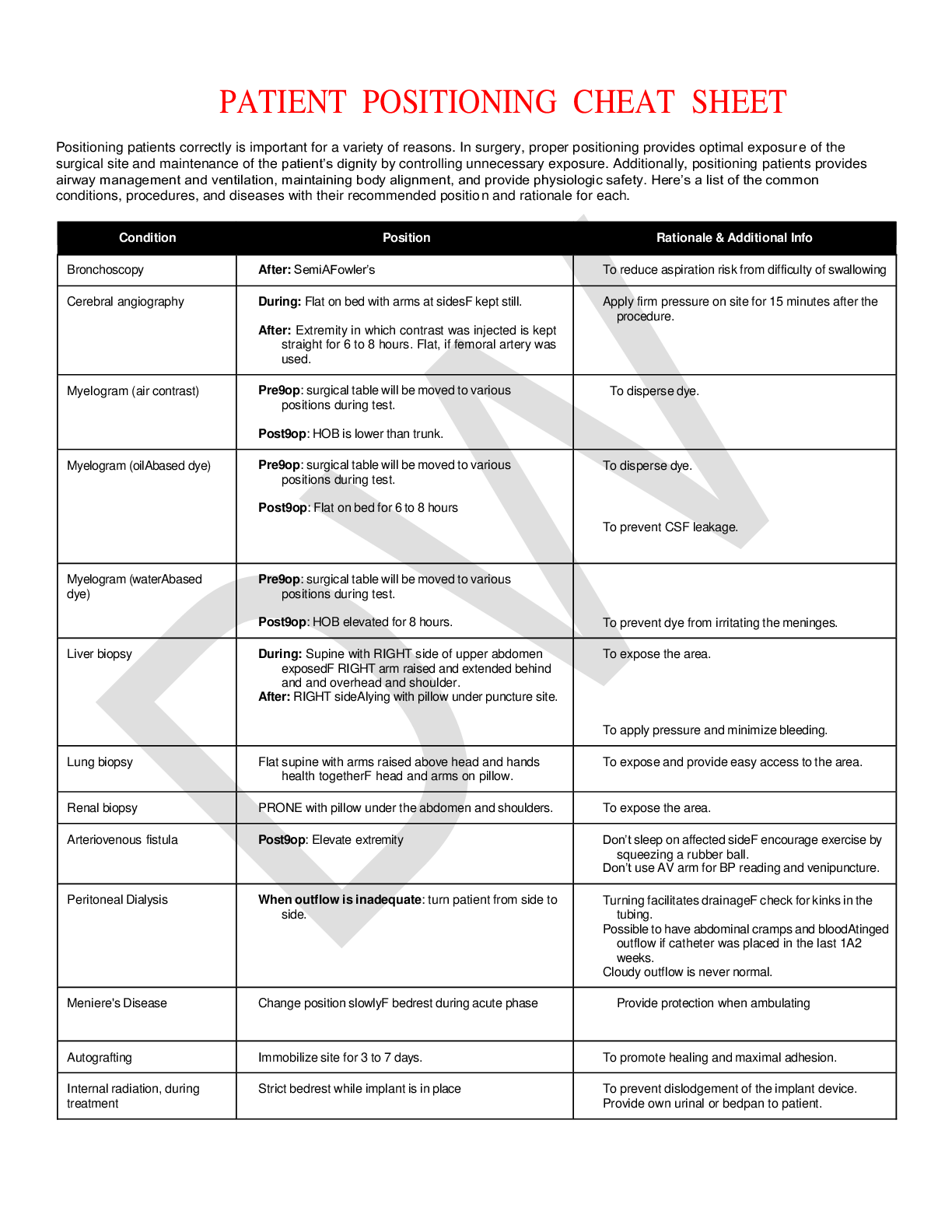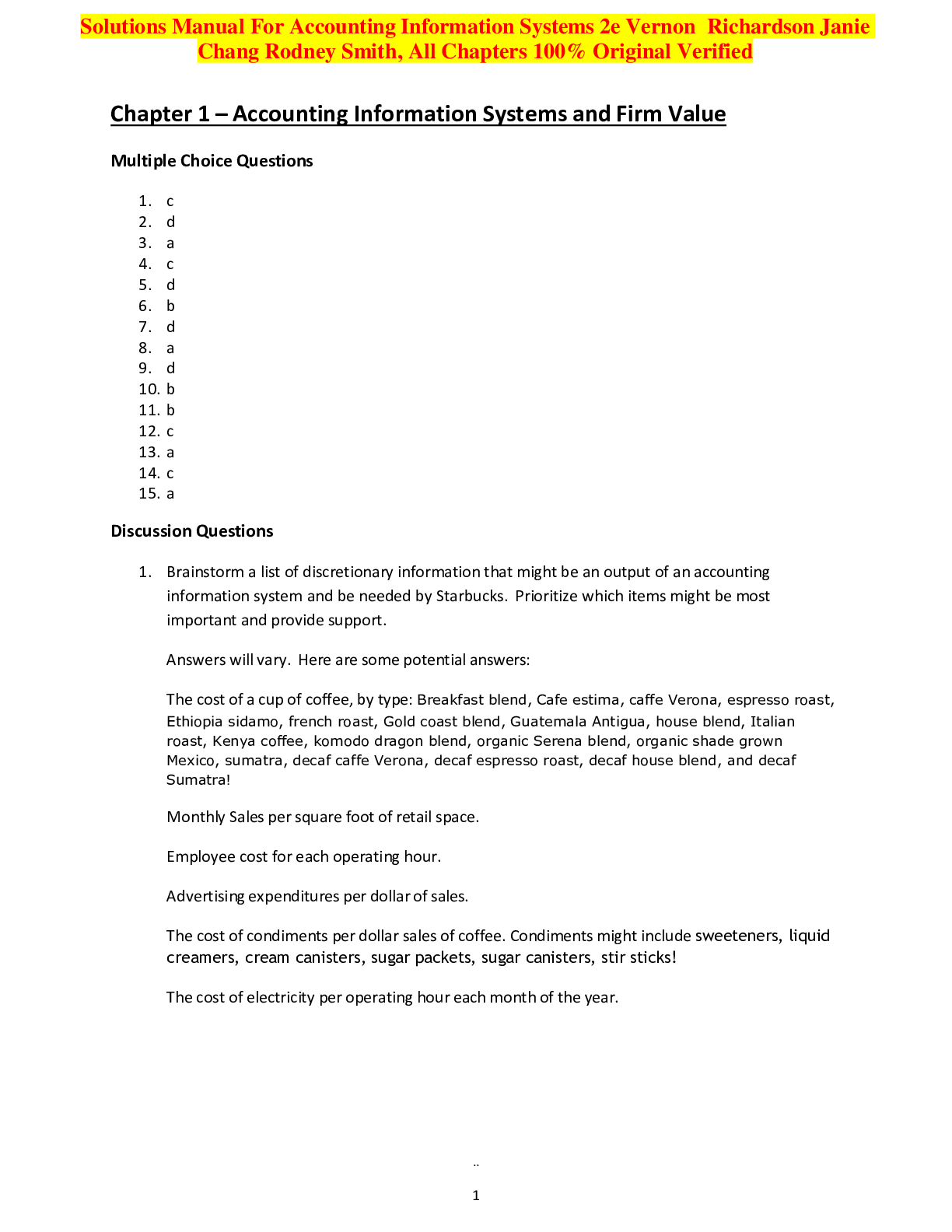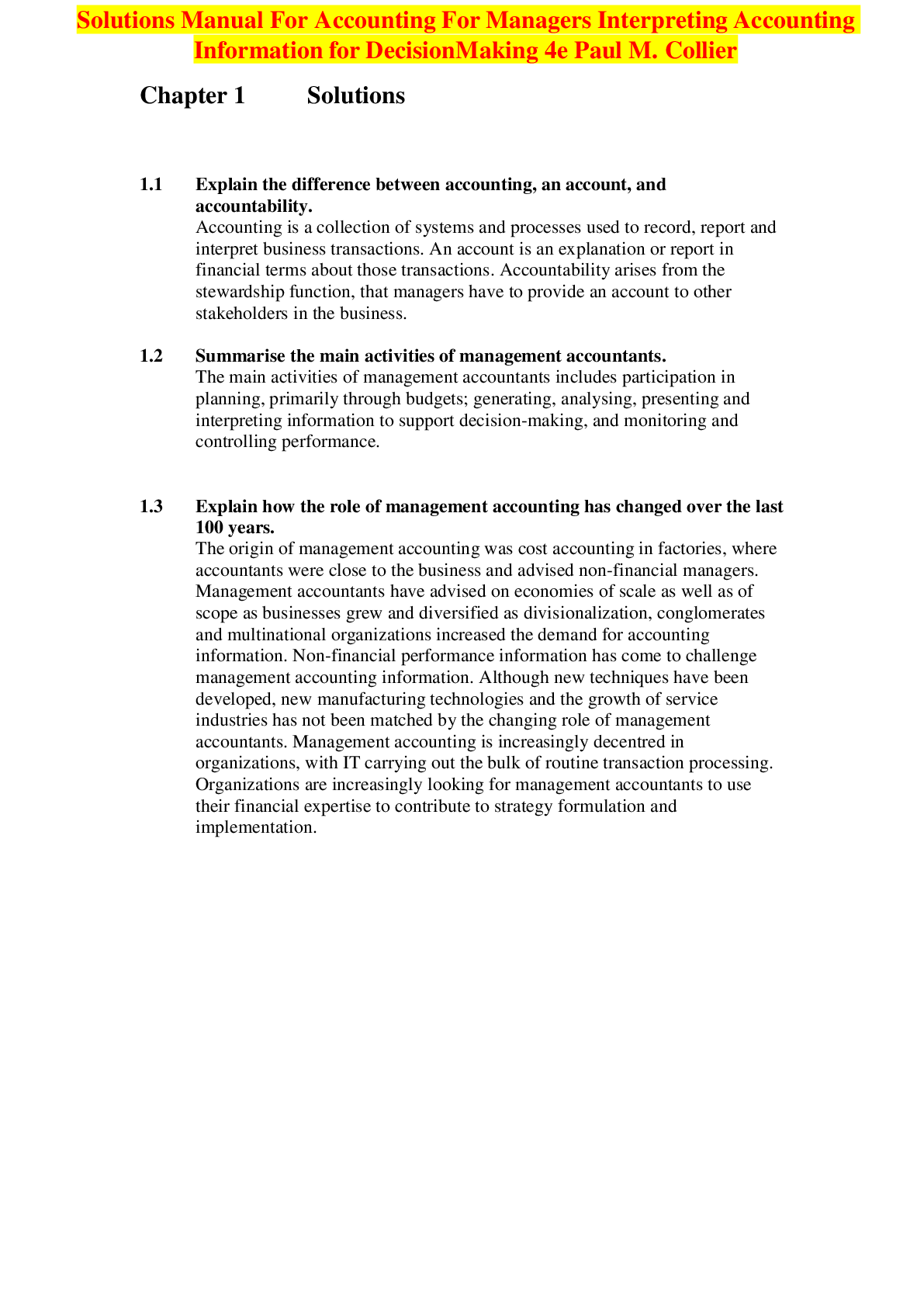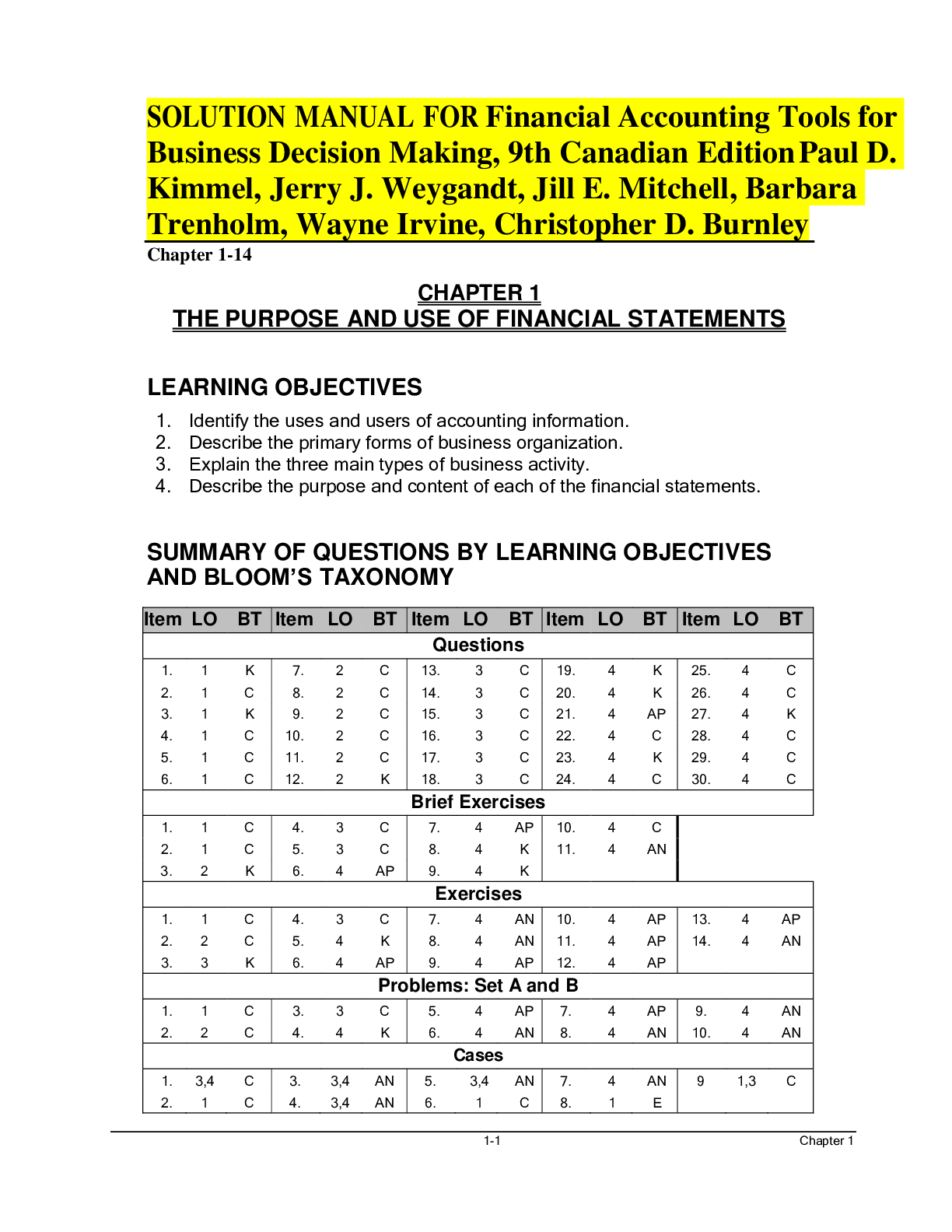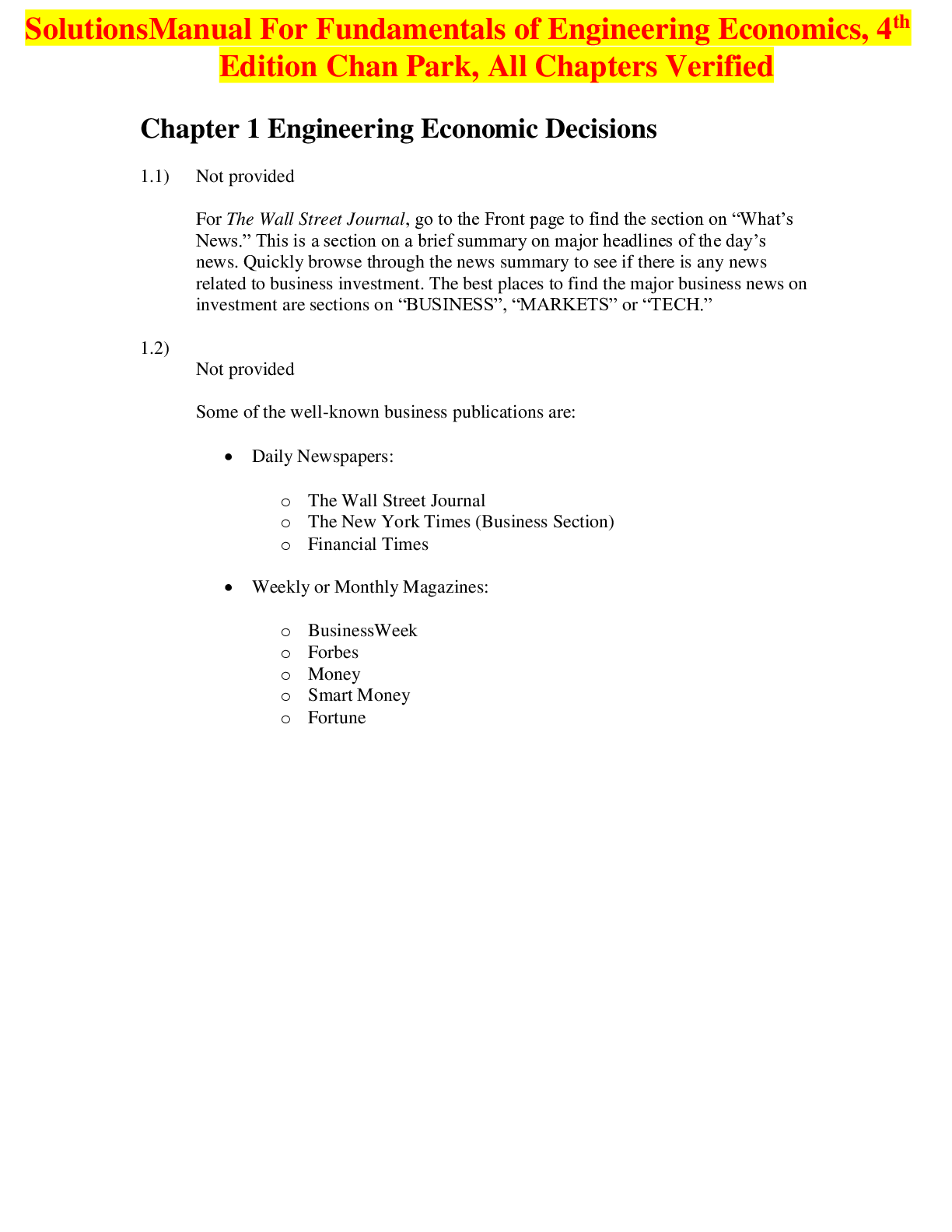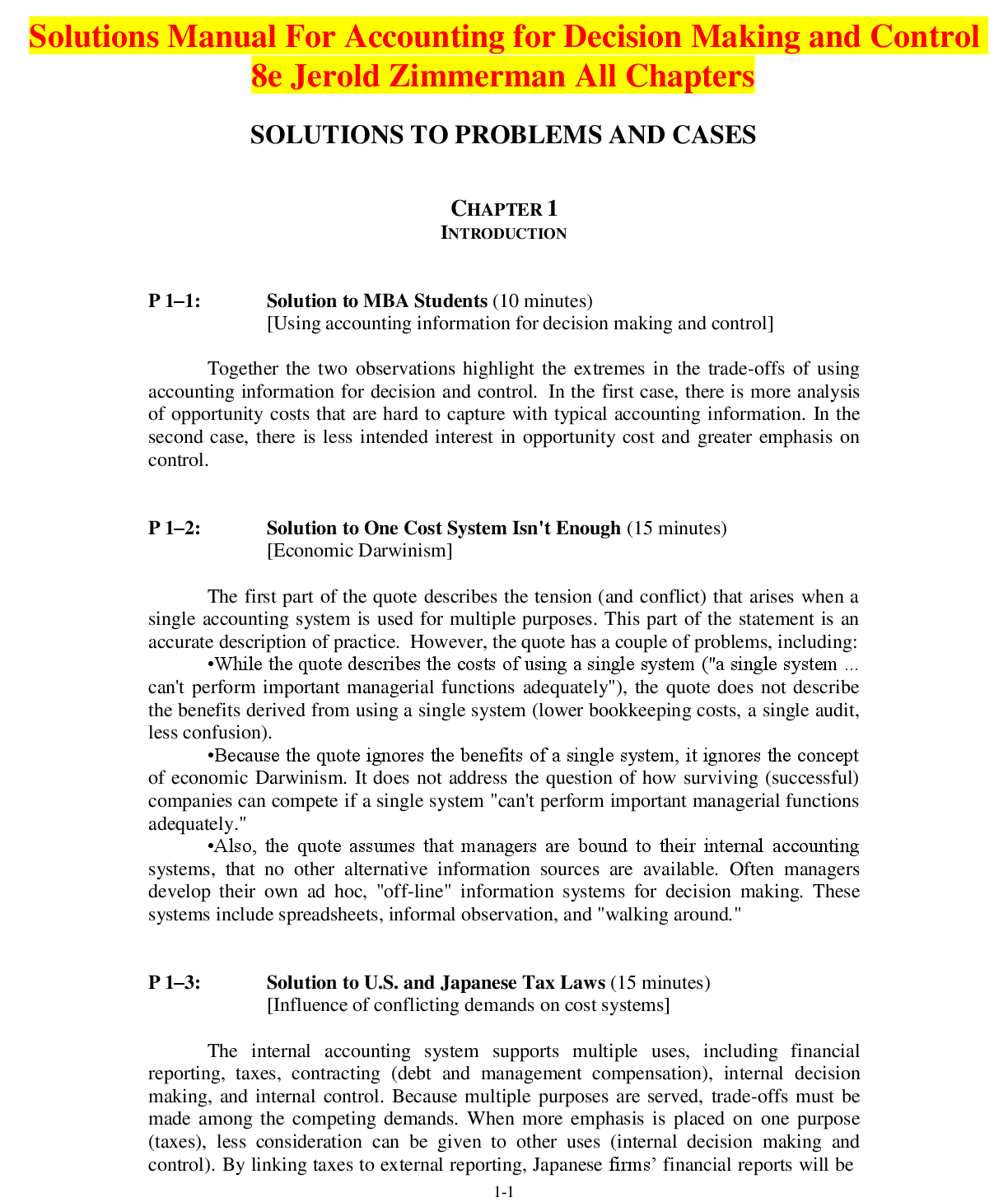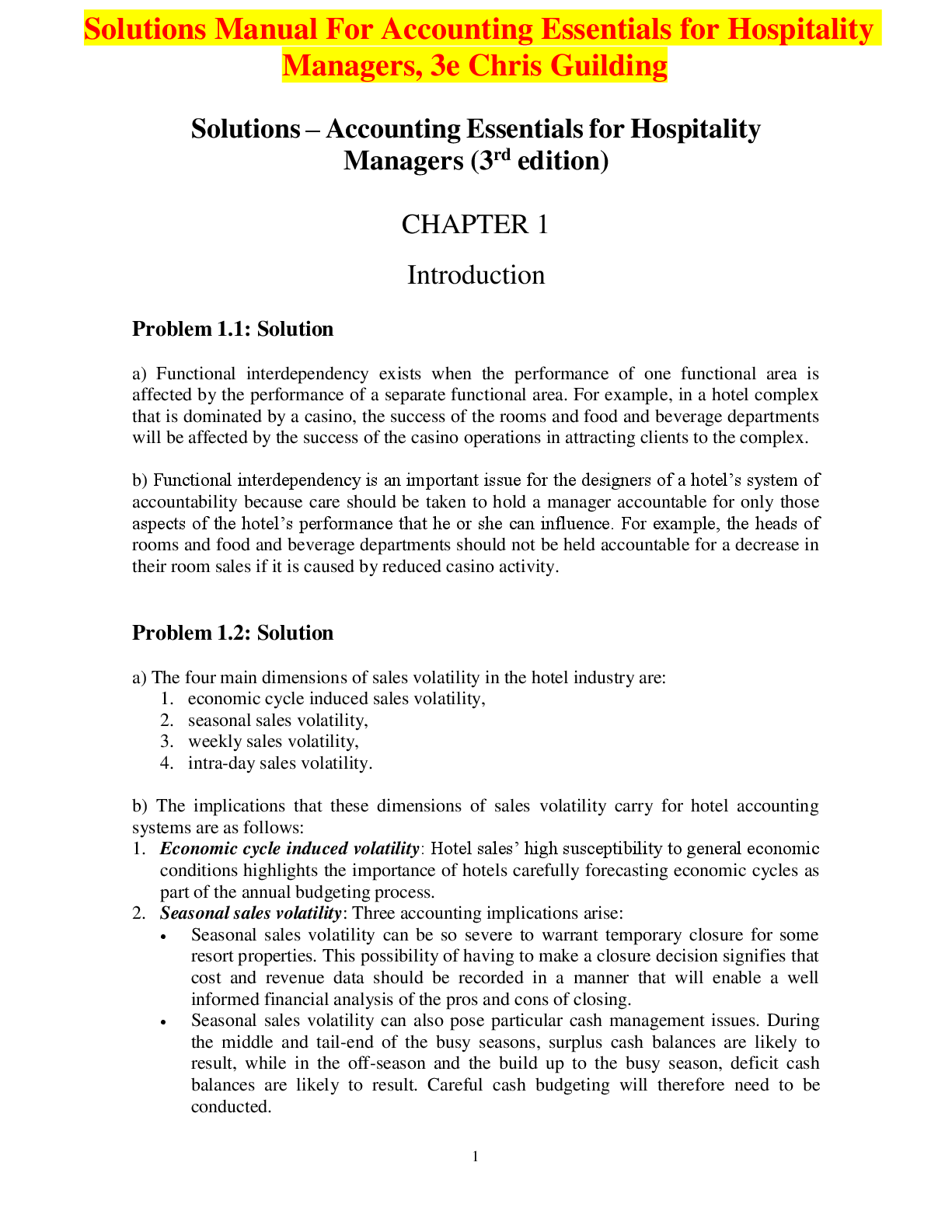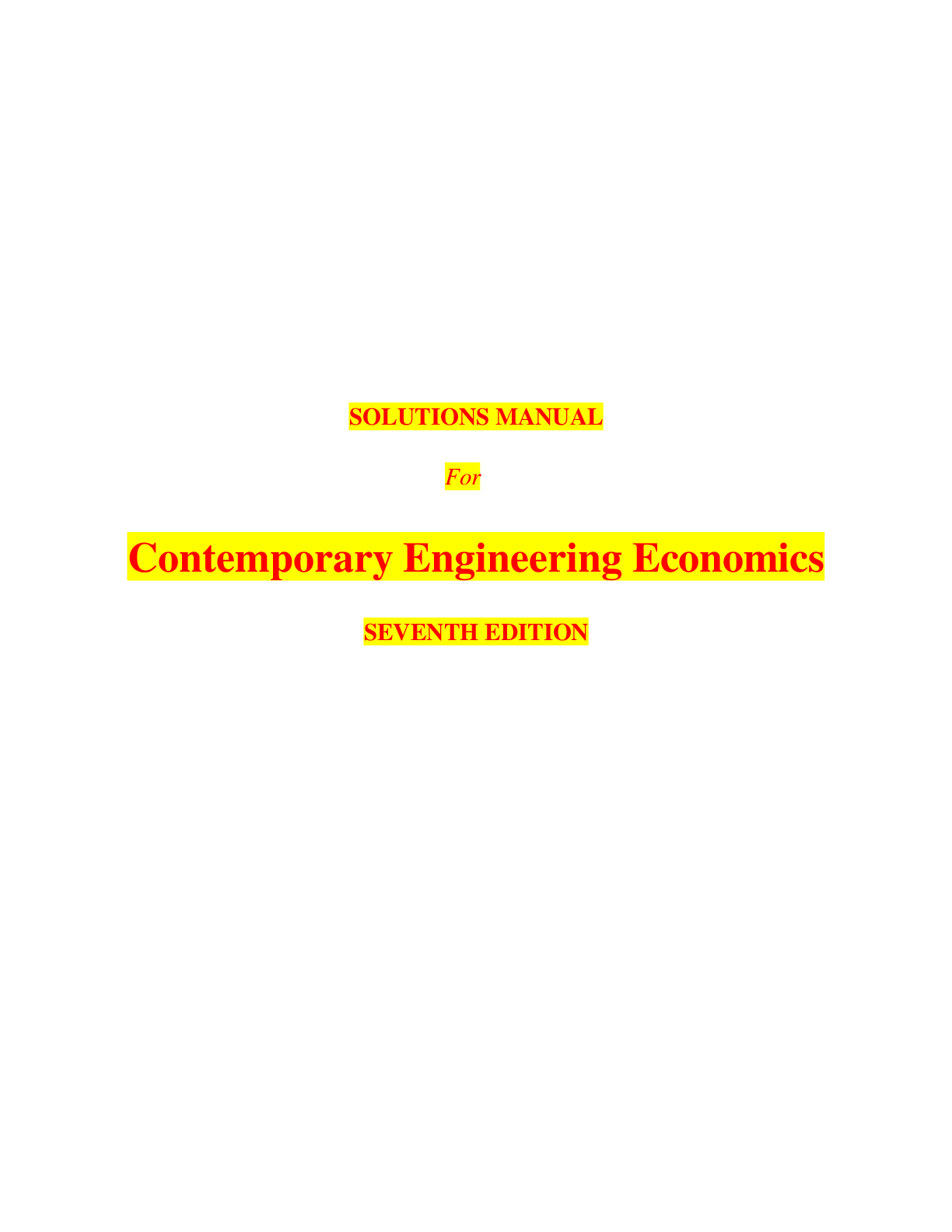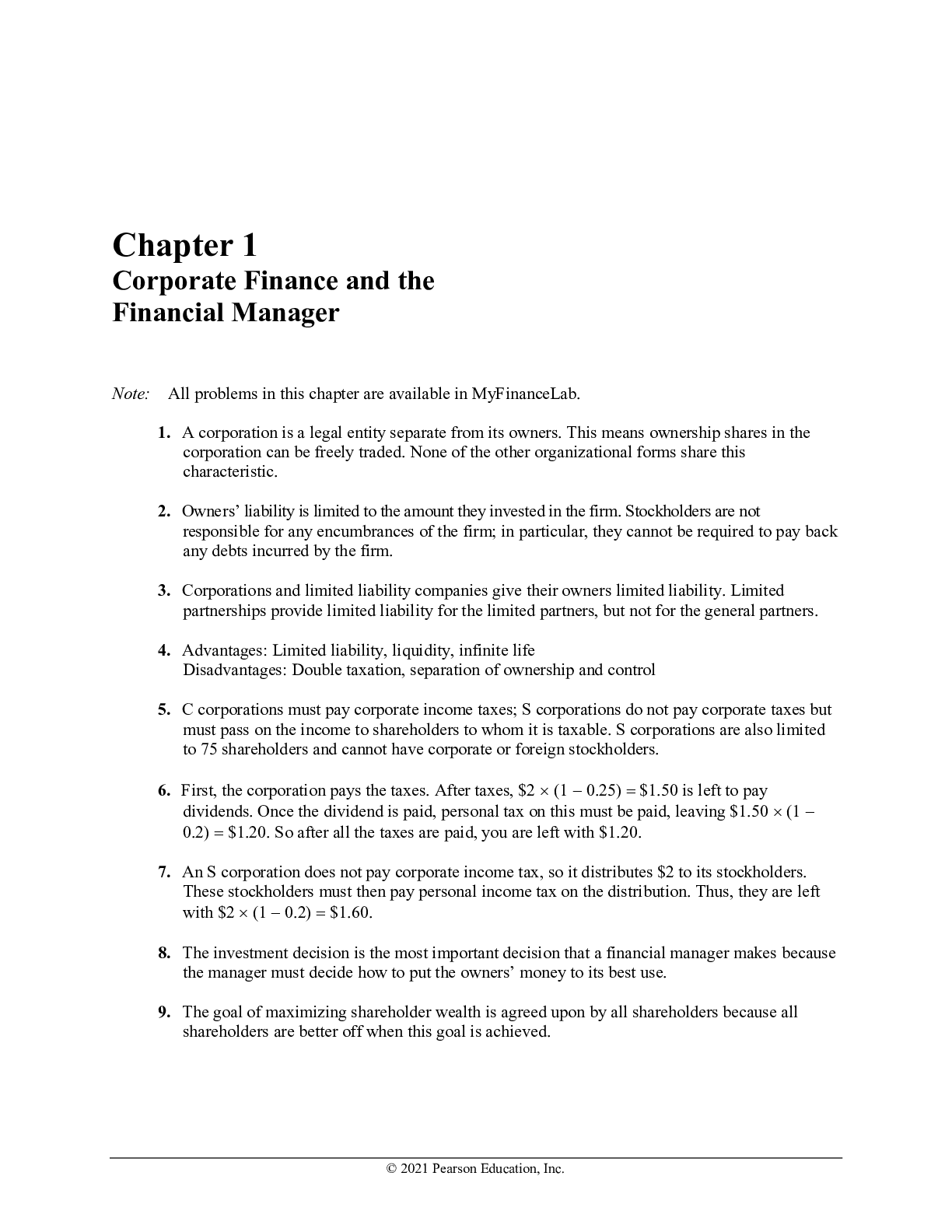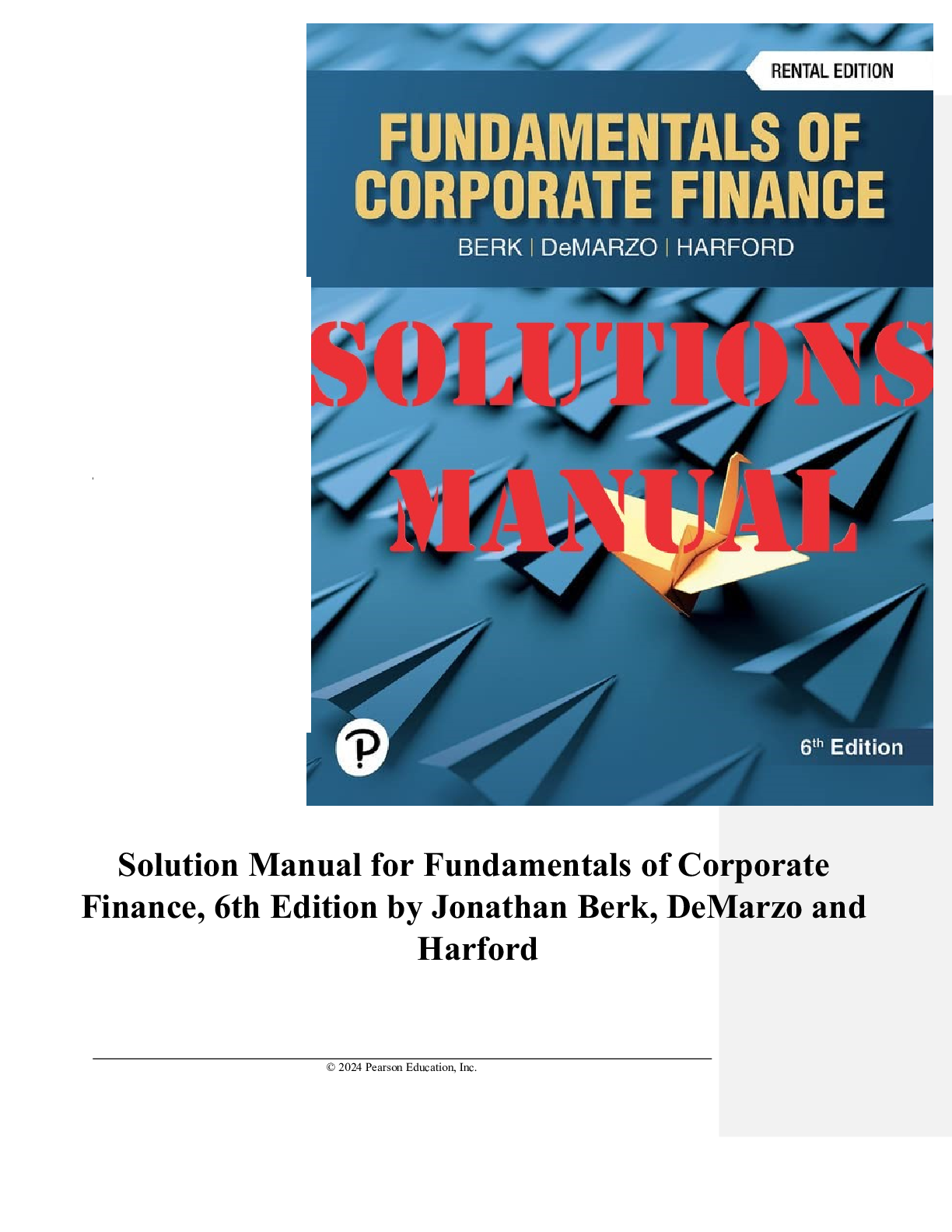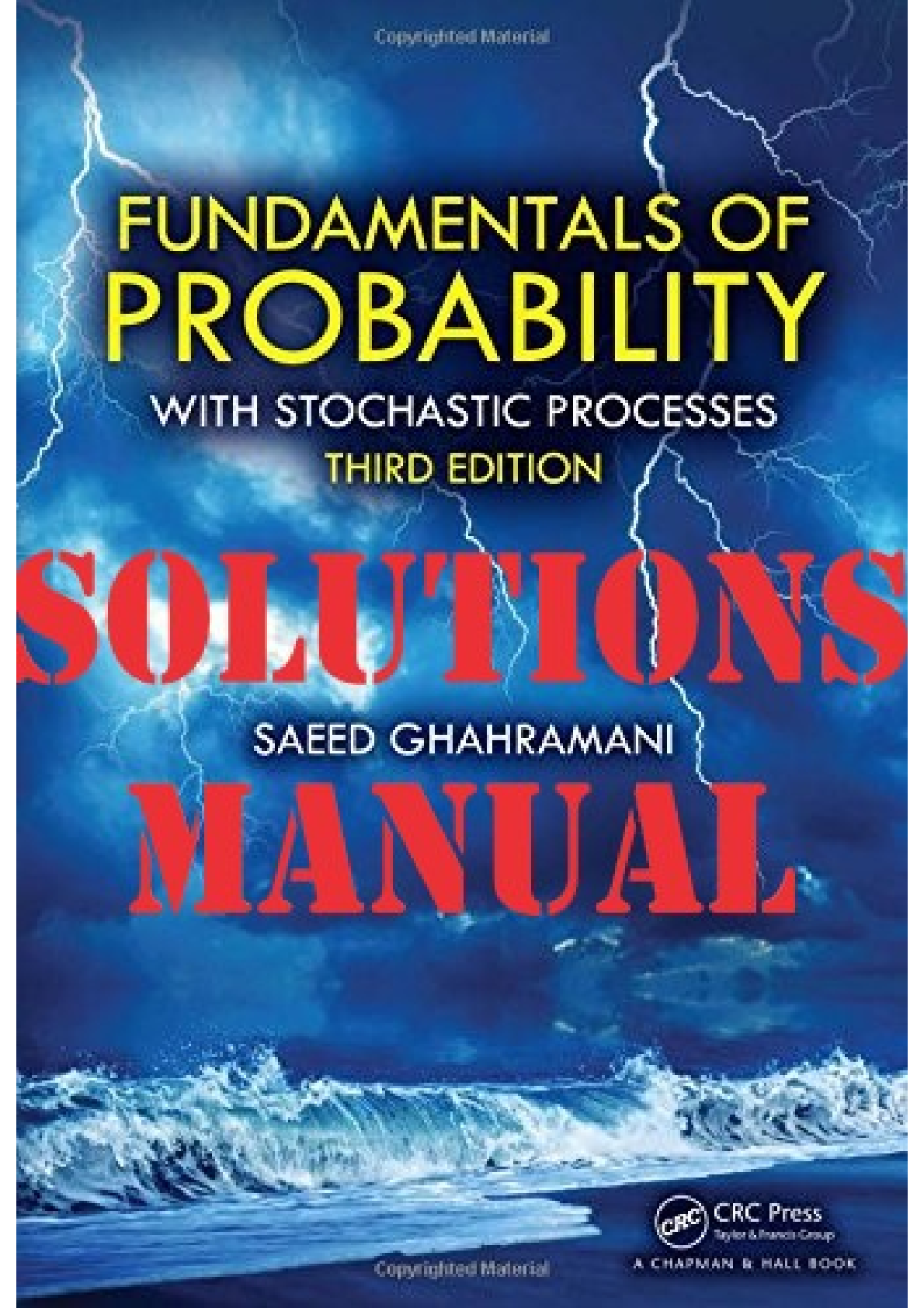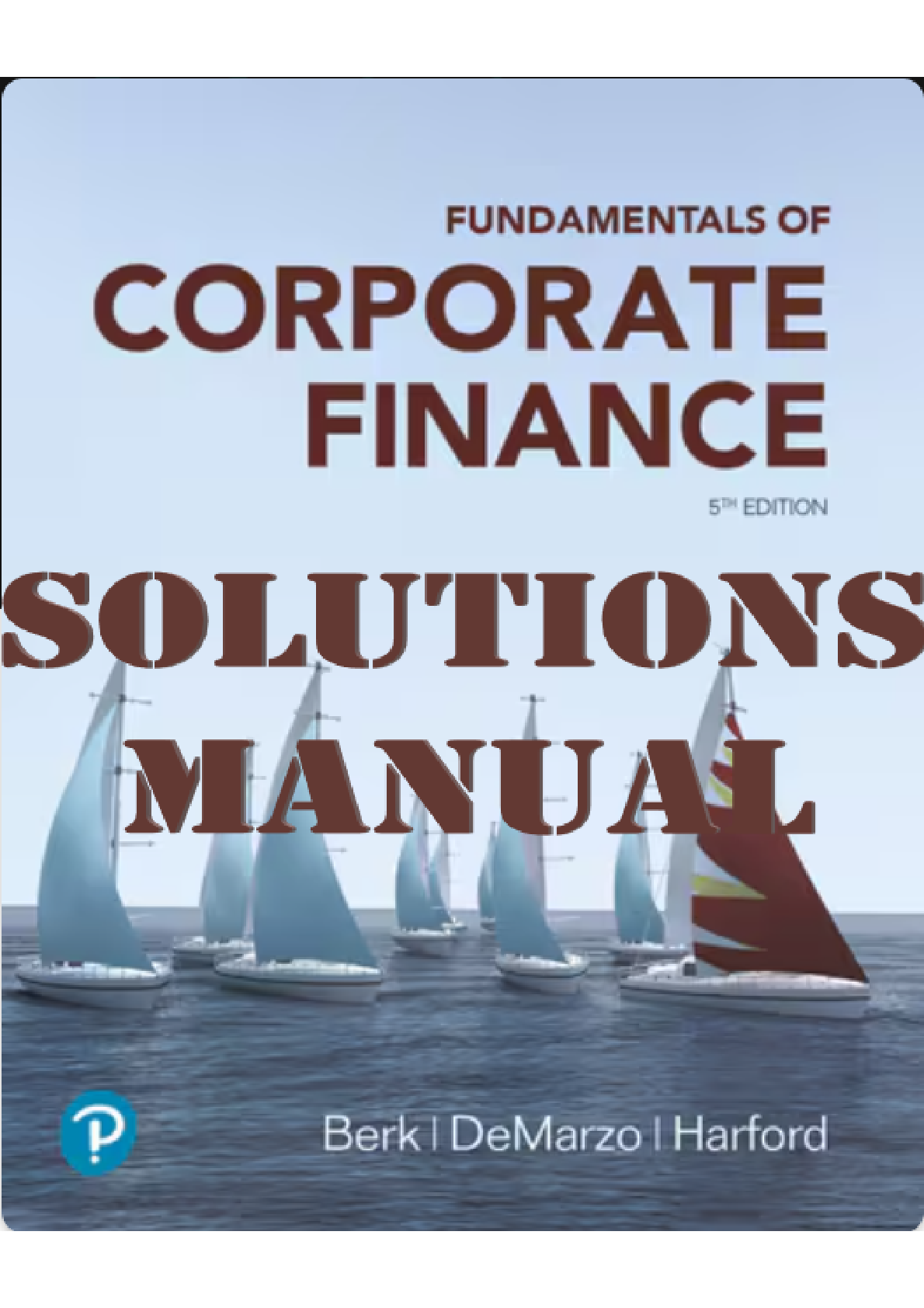Finance > SOLUTIONS MANUAL > Solutions Manual For Fundamentals of Corporate Finance with Islamic Finance (Custom Edition for MEA) (All)
Solutions Manual For Fundamentals of Corporate Finance with Islamic Finance (Custom Edition for MEA) 1e Stephen Ross
Document Content and Description Below
Solutions Manual For Fundamentals of Corporate Finance with Islamic Finance (Custom Edition for MEA) 1e Stephen Ross-1. Capital budgeting (deciding whether to expand a manufacturing plant), capital st... ructure (deciding whether to issue new equity and use the proceeds to retire outstanding debt), and working capital management (modifying the firm’s credit collection policy with its customers). 2. Disadvantages: unlimited liability, limited life, difficulty in transferring ownership, difficulty in raising capital funds. Some advantages: simpler, less regulation, the owners are also the managers, sometimes personal tax rates are better than corporate tax rates. 3. The primary disadvantage of the corporate form is the double taxation to shareholders of distributed earnings and dividends. Some advantages include: limited liability, ease of transferability, ability to raise capital, and unlimited life. 4. In response to Sarbanes-Oxley, small firms have elected to go dark because of the costs of compliance. The costs to comply with Sarbox can be several million dollars, which can be a large percentage of a small firm’s profits. A major cost of going dark is less access to capital. Since the firm is no longer publicly traded, it can no longer raise money in the public market. Although the company will still have access to bank loans and the private equity market, the costs associated with raising funds in these markets are usually higher than the costs of raising funds in the public market. 5. The treasurer’s office and the controller’s office are the two primary organizational groups that report directly to the chief financial officer. The controller’s office handles cost and financial accounting, tax management, and management information systems, while the treasurer’s office isresponsible for cash and credit management, capital budgeting, and financial planning. Therefore, the study of corporate finance is concentrated within the treasury group’s functions. 6. To maximize the current market value (share price) of the equity of the firm (whether it’s publicly traded or not). 7. In the corporate form of ownership, the shareholders are the owners of the firm. The shareholders elect the directors of the corporation, who in turn appoint the firm’s management. This separation of ownership from control in the corporate form of organization is what causes agency problems to exist. Management may act in its own or someone else’s best interests, rather than those of the shareholders. If such events occur, they may contradict the goal of maximizing the share price of the equity of the firm. 8. A primary market transaction. 2 SOLUTIONS MANUAL 9. In auction markets like the NYSE, brokers and agents meet at a physical location (the exchange) to match buyers and sellers of assets. Dealer markets like NASDAQ consist of dealers operating at dispersed locales who buy and sell assets themselves, communicating with other dealers either electronically or literally over-the-counter. 10. Such organizations frequently pursue social or political missions, so many different goals are conceivable. One goal that is often cited is revenue minimization; that is, provide whatever goods and services are offered at the lowest possible cost to society. A better approach might be to observe that even a not-for-profit business has equity. Thus, one answer is that the appropriate goal is to maximize the value of the equity. 11. Presumably, the current stock value reflects the risk, timing, and magnitude of all future cash flows, both short-term and long-term. If this is correct, then the statement is false. 12. An argument can be made either way. At the one extreme, we could argue that in a market economy, all of these things are priced. There is thus an optimal level of, for example, ethical and/or illegal behavior, and the framework of stock valuation explicitly includes these. At the other extreme, we could argue that these are noneconomic phenomena and are best handled through the political process. A classic (and highly relevant) thought question that illustrates this debate goes something like this: “A firm has estimated that the cost of improving the safety of one of its products is $30 million. However, the firm believes that improving the safety of the product will only save $20 million in product liability claims. What should the firm do?” 13. The goal will be the same, but the best course of action toward that goal may be different because of differing social, political, and economic institutions. 14. The goal of management should be to maximize the share price for the current shareholders. If management believes that it can improve the profitability of the firm so that the share price will exceed $35, then they should fight the offer from the outside company. If management believes that this bidder or other unidentified bidders will actually pay more than $35 per share to acquire the company, then they should still fight the offer. However, if the current management cannot increase the value of the firm beyond the bid price, and no other higher bids come in, then management is not acting in the interests of the shareholders by fighting the offer. Since current managers often lose their jobs when the corporation is acquired, poorly monitored managers have an incentive to fight corporate takeovers in situations such as this. 15. We would expect agency problems to be less severe in countries with a relatively small percentage of individual ownership. Fewer individual owners should reduce the number of diverse opinions concerning corporate goals. The high percentage of institutional ownership might lead to a higher degree of agreement between owners and managers on decisions concerning risky projects. In addition, institutions may be better able to implement effective monitoring mechanisms on managers than can individual owners, based on the institutions’ deeper resources and experiences with their own management. The increase in institutional ownership of stock in the United States and the growing activism of these large shareholder groups may lead to a reduction in agency problems for U.S. corporations and a more efficient market for corporate control. [Show More]
Last updated: 4 months ago
Preview 5 out of 480 pages

Loading document previews ...
Buy this document to get the full access instantly
Instant Download Access after purchase
Buy NowInstant download
We Accept:

Reviews( 0 )
$17.50
Can't find what you want? Try our AI powered Search
Document information
Connected school, study & course
About the document
Uploaded On
Mar 27, 2025
Number of pages
480
Written in
Additional information
This document has been written for:
Uploaded
Mar 27, 2025
Downloads
0
Views
15

